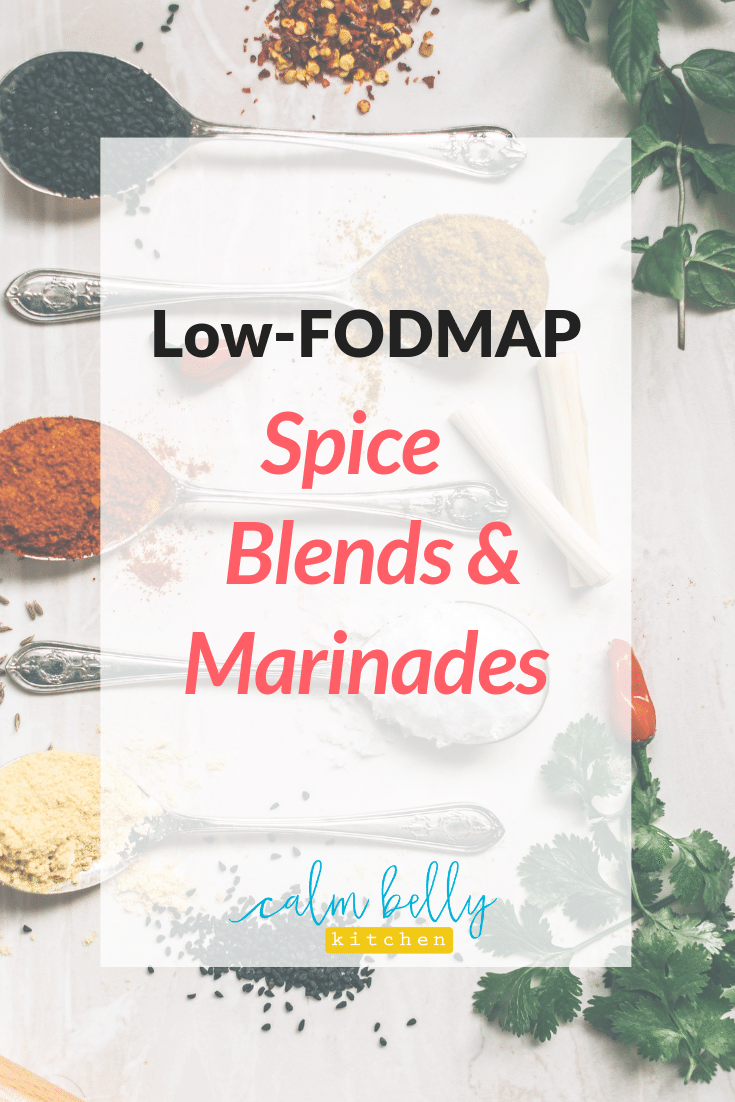Easy Coconut-Shrimp Curry with Chickpeas (low FODMAP, dairy free)
Pin it!
This low-FODMAP curry has a satisfying creamy texture thanks to coconut milk. But it’s also packed with flavor from a few carefully chosen spices.
If you think high-FODMAP ingredients like garlic, onion, or store-bought broth are necessary for a tasty curry, you’re going to like this recipe.
This post is part of the Low-FODMAP Spices Series, and I chose to highlight coriander with an easy weeknight curry.
Check out the other posts in the Low-FODMAP Spices Series:
Grilled Chicken with Curry-Lime Marinade
Ancho-Orange Roast Chicken and Spaghetti Squash
Maple-Soy Chicken Drumsticks with 5 Spice
What does coriander taste like and how do you use it?
You’ve likely tasted coriander, but you may not know it - It’s frequently paired and blended with other spices, but sometimes I like making it the star of the show.
It’s a common mate for cumin and chile powder in Mexican cooking. It also makes frequent appearances in Indian recipes, as well as their signature spice blends like garam masala and curry seasoning.
Coriander has a warm, earthy, slightly citrusy flavor with a sour edge in the background (It comes from the same plant as fresh cilantro leaves, but they taste completely different.). Some people taste lemon, but I get a hint of orange, and I love pairing coriander and orange zest.
It’s fun to select your own curry spices rather than buying the standard yellow “curry powder,” because you can highlight your favorite flavors. And you don’t need to fuss with 10 different spices (exhausting!).
Along with the mellow, earthy coriander, I used cumin for smokiness and depth plus turmeric for that bright yellow color and tangy flavor. As with all spices, make sure they’re fresh so you get the full flavor.
Here a few more ways you can use coriander:
- Pair with thyme and orange zest as a rub for roast turkey, chicken or pork
- Pair with cumin and ancho chile powder, and use Mexican dishes
- Season vegetables for roasting - Try potatoes, acorn squash, spaghetti squash, carrots, eggplant, or rutabaga
- Try it in creamy parsnip-potato or carrot soup
- Spice up rice pilaf
The trio of spices in this curry is definitely a major flavor factor, but cooking technique also makes a HUGE difference.
Here’s how I built flavor during the cooking process:
- I sauteed the leek until lightly browned to bring out its sweetness, then added the jalapeno, ginger and some of the spices just until combined. I took this mixture OUT of the pan and added it back at the very end so the flavors stayed fresh and bold.
- I seasoned at every stage of the cooking process.
- I sauteed the potatoes, carrots, tomatoes, and spices BEFORE adding any liquid so the spices would have a chance to toast and the vegetables would develop more flavor. The picture below is exactly what that looks like - YUM right?
You can use these techniques in all sorts of recipes!
Easy Coconut-Shrimp Curry with Chickpeas (low FODMAP, dairy free)
You can omit the shrimp and add an extra potato to make this dish vegan, or substitute chicken for the shrimp. To prep the leek, cut off the white part and discard the tough outer layers. Here’s the best leek washing technique. In a pinch, you can sub scallion tops for the leek, but cook them for 30 seconds at most.
Serves 4
INGREDIENTS
2 tbsp oil or ghee, divided
1 leek top (green part only), chopped (see note)
Salt and freshly ground black pepper to taste
1 jalapeno, chopped (optional, see note)
1-inch piece fresh ginger, peeled and finely chopped
1 tbsp ground coriander, divided
2 tsp ground cumin, divided
1 medium Russet potato (about 8 oz), peeled and cut into 1-inch chunks (about 2 cups)
2 medium carrots, sliced (about 1 cup)
1 large tomato (about 8 oz), chopped (about 1 cup)
1 1/2 tsp turmeric
1 1/2 cups water
1 (13.5 oz) can coconut milk, regular or light
1 slightly heaping cup canned and rinsed chickpeas (168 g)
3/4 pound medium shrimp
1/2 lime
Chopped fresh cilantro for serving
INSTRUCTIONS
1. Heat 1 tbsp of the oil in a large sauce pan or Dutch oven on medium heat. Add leek, season with salt and pepper and cook, stirring frequently, until lightly browned, about 5 minutes. Add jalapeno, ginger, and ½ tsp EACH of the coriander and cumin. Cook until jalapeno softens, 1 to 2 minutes. Transfer to a small bowl and set aside.
2. Add remaining oil to pan and raise heat to medium high. Add potato and carrots, season with salt and pepper and cook, stirring frequently, until carrots softens slightly, about 5 minutes. Add tomato, remaining coriander, remaining cumin, and turmeric; season with salt and pepper. Cook, stirring frequently, until tomato breaks down and becomes saucy, 5 to 6 minutes.
3. Add water. Raise heat to high and bring to a boil. Add coconut milk and bring to a boil. Add chickpeas. Reduce heat to medium/medium-high and cook, uncovered, at a steady simmer until potatoes and carrots are tender, about 10 minutes.
4. Add shrimp and simmer, stirring occasionally, until opaque in the thickest part, 2 to 3 minutes. Stir in reserved leek mixture and remove from heat. Stir in juice of half a lime. Taste for seasoning and add salt and pepper if desired. Serve over Perfect Basmati Rice (recipe below) and garnish with cilantro.
Perfect Basmati Rice
You can use brown basmati if you prefer; follow cooking instructions on the package.
Serves 4 to 6
1 tbsp unsalted butter
1 cup white basmati rice
2 cups water
½ tsp salt
In a medium saucepan, melt butter on medium heat. Add rice and cook, stirring frequently, until grains become partially opaque, about 2 minutes. Add water and salt. Raise heat to high and bring to a boil. Reduce heat to lowest setting, cover, and cook for 17 minutes. With cover still in place, rest 10 minutes. Fluff with a fork and serve.















































The FODMAP elimination stage should last 4 to 8 weeks. Read the 3 key reasons why you should complete BOTH phases of the FODMAP diet and bring the foods that don’t trigger your symptoms back into your life.